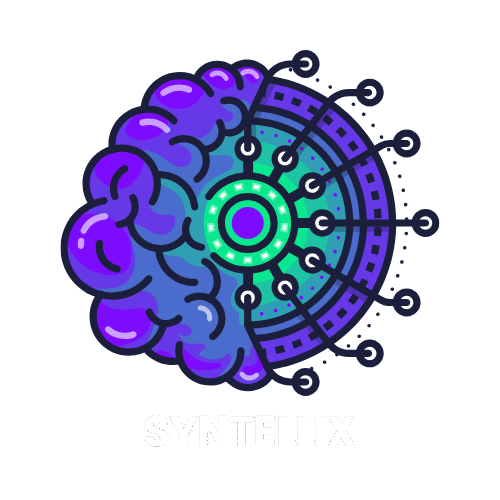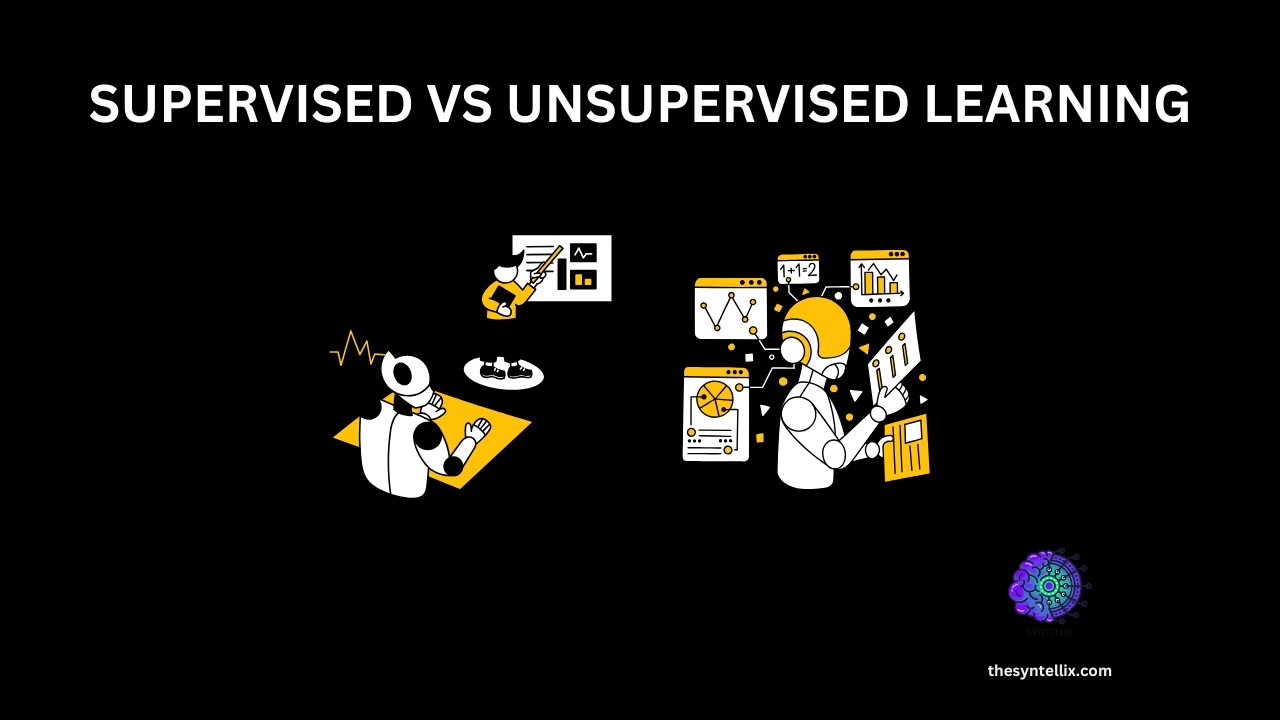If you’re just starting your journey into the world of machine learning, you’ve likely come across two fundamental terms: supervised vs unsupervised learning. Understanding the difference between these two core types of machine learning is the single most important step in choosing the right approach for any project.
While they both aim to help computers learn from data, they do so in completely different ways. Think of them as two different methods of teaching—one with a teacher, and one where the student explores on their own.
Let’s break down supervised vs unsupervised learning with clear explanations and real-world examples.
What is Supervised Learning? (The “Teacher” Method)
Imagine you’re teaching a computer to identify whether a picture contains a cat or a dog. In supervised learning, you act as the teacher.
You would give the computer a massive dataset of photos, but with a crucial twist: every single photo is labeled. You tell the computer, “This is a dog,” “That’s a cat,” “This one is a dog,” and so on. The model’s job is to learn the relationship between the features of the photo (the pixels, shapes, colors) and its corresponding label (“dog” or “cat”).
The “supervision” comes from the fact that you provide the correct answers, or “labels,” upfront. The model learns by comparing its predictions with the correct answers and adjusting its internal logic until it can make accurate predictions on its own.
Key Characteristics of Supervised Learning:
- Data: The data must be labeled. This means every data point has a corresponding correct answer.
- Goal: To predict a known outcome or label based on new, unseen data.
- Common Tasks:
- Classification: Predicting a category or a label (e.g., Is this email spam or not? Will this customer churn or stay?).
- Regression: Predicting a continuous numerical value (e.g., What will the price of this house be? What is the temperature tomorrow?).
Supervised Learning Examples:
- Email Spam Filter: A model is trained on thousands of emails that are labeled as “spam” or “not spam.”
- Predicting House Prices: A model is trained on a dataset of houses that includes features (square footage, number of bedrooms) and their final sale price.
- Medical Diagnosis: A model trained on patient data (symptoms, test results) and their confirmed diagnoses.
What is Unsupervised Learning? (The “Explorer” Method)
Now, let’s go back to our photo example. In unsupervised learning, there is no teacher. You give the computer the same massive dataset of photos, but this time, there are no labels. The computer has no idea which photos are dogs and which are cats.
Instead of being told the right answer, the model is tasked with finding patterns and relationships on its own. It might group similar-looking photos together without ever knowing what they are. It might create one group for photos with pointy ears and long snouts, and another for photos with rounder faces. It has “discovered” the difference between dogs and cats, even without being told the labels.
The goal of unsupervised learning is to explore the data and find hidden structures, clusters, or patterns.
Key Characteristics of Unsupervised Learning:
- Data: The data is unlabeled. There are no correct answers provided in the training data.
- Goal: To find hidden structures, discover patterns, or simplify the dataset.
- Common Tasks:
- Clustering: Grouping similar data points together (e.g., segmenting customers into different buying groups).
- Dimensionality Reduction: Reducing the number of features in a dataset to simplify it without losing too much information.
Unsupervised Learning Examples:
- Market Segmentation: A model analyzes customer purchasing behavior to group them into different segments (e.g., “heavy spenders,” “occasional shoppers,” “bargain hunters”).
- Recommender Systems: The “people who bought this also bought…” feature on e-commerce sites often uses unsupervised learning to find hidden groups of products that are frequently purchased together.
- Anomaly Detection: A model analyzes network traffic to find unusual patterns that could indicate a cyber-attack.
Supervised vs Unsupervised Learning: Key Differences
| Feature | Supervised Learning | Unsupervised Learning |
| Data Type | Labeled Data (Data with correct answers) | Unlabeled Data (Data with no correct answers) |
| Primary Goal | To predict a specific outcome or label. | To find hidden patterns or structures in the data. |
| Core Task | Classification or Regression. | Clustering or Dimensionality Reduction. |
| Feedback | The model receives feedback from the correct labels. | The model operates without any external feedback. |
| Analogy | Learning with a teacher. | Learning by exploration and self-discovery. |
| Example | Predicting if an image is a dog or a cat. | Grouping similar images without knowing what they are. |
How to Choose the Right Approach
Choosing between supervised vs unsupervised learning boils down to a single, critical question:
“Do I have a dataset where the answers are already known?”
- If your data is labeled and you want to predict that label for new data (e.g., predict a price, predict a category), then supervised learning is your answer. This is the more common and often more straightforward type of machine learning.
- If your data is unlabeled and you want to explore it to find hidden groups or simplify its structure, then unsupervised learning is the right choice. This is often used for initial data analysis or when the problem doesn’t have a clear, pre-defined answer.
Mastering the difference between these two core paradigms is a cornerstone of a successful machine learning career. By understanding when to use a teacher and when to let the algorithm explore on its own, you’ll be well-equipped to tackle a vast range of real-world problems.
-
What’s the main difference between supervised and unsupervised learning?
The main difference is the type of data used. Supervised learning uses labeled data, which means each data point has a corresponding correct answer or “tag.” The goal is to predict that label for new data. Unsupervised learning uses unlabeled data to find hidden patterns or structures on its own, without any correct answers provided.
-
Is ChatGPT supervised or unsupervised learning?
ChatGPT uses a combination of both. Its core is a pre-trained unsupervised model that learned the structure of language by analyzing a massive amount of text from the internet. However, it was then fine-tuned using reinforcement learning with human feedback (a form of supervised learning), where human trainers provided examples of preferred responses to improve its conversational abilities.
-
What is an example of supervised learning?
A classic example of supervised learning is a spam filter for email. The model is trained on a large dataset of emails that have been manually labeled as either “spam” or “not spam.” By analyzing the features of these labeled emails (e.g., keywords, sender information), the model learns the rules to predict if a new, incoming email is spam.
-
Is classification supervised or unsupervised?
Classification is a form of supervised learning. The goal of classification is to predict a discrete category or label (e.g., “spam” or “not spam,” “cat” or “dog”). To do this, the model must be trained on a dataset where the correct categories are already provided (labeled data).
Stay ahead of the curve with the latest insights, tips, and trends in AI, technology, and innovation.

